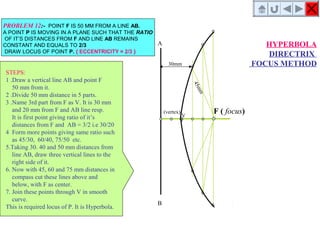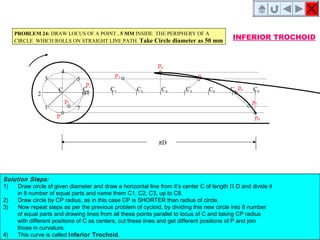This document provides methods for drawing three common conic sections (curves): ellipses, parabolas, and hyperbolas. It outlines six different methods for constructing ellipses, including the concentric circle, rectangle, oblong, arcs of circles, rhombus, and directrix-focus methods. Two methods are described for drawing parabolas: the rectangle method and method of tangents. And three examples are given for hyperbolas: the rectangular hyperbola using coordinates, the P-V diagram, and the directrix-focus method. The document also explains how to draw tangents and normals to these curves from a given point.



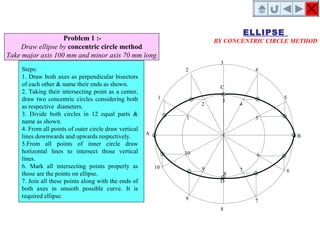
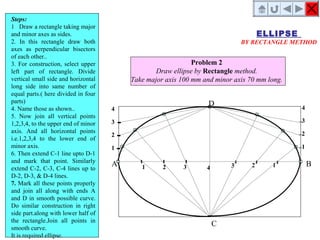
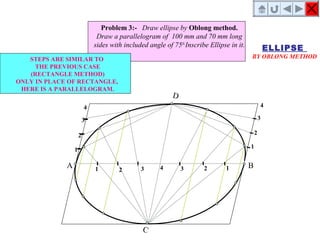




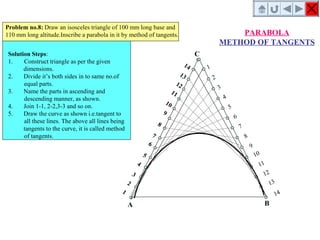

![P
O
40 mm
30 mm
1
2
3
12 1 2 3
1
2
HYPERBOLA
THROUGH A POINT
OF KNOWN CO-ORDINATES
SSolution Steps:
Extend horizontal line from P to
right side.
2Extend vertical line from P upward.
3On horizontal line from P, mark
some points taking any distance and
name them after P-1, 2,3,4 etc.
4Join 1-2-3-4 points to pole O. Let
them cut part [P-B] also at 1,2,3,4
points.
5From horizontal 1,2,3,4 draw
vertical lines downwards and
6From vertical 1,2,3,4 points [from
P-B] draw horizontal lines.
7Line from 1 horizontal and line from
1 vertical will meet at P1
.Similarly
mark P2
, P3
, P4
points.
8Repeat the procedure by marking
four points on upward vertical line
from P and joining all those to pole
O. Name this points P6
, P7
, P8
etc. and
join them by smooth curve.
Problem No.10: Point P is 40 mm and 30 mm from horizontal
and vertical axes respectively.Draw Hyperbola through it.](https://image.slidesharecdn.com/engineering-curves-190406061342/85/Engineering-curves-13-320.jpg)

